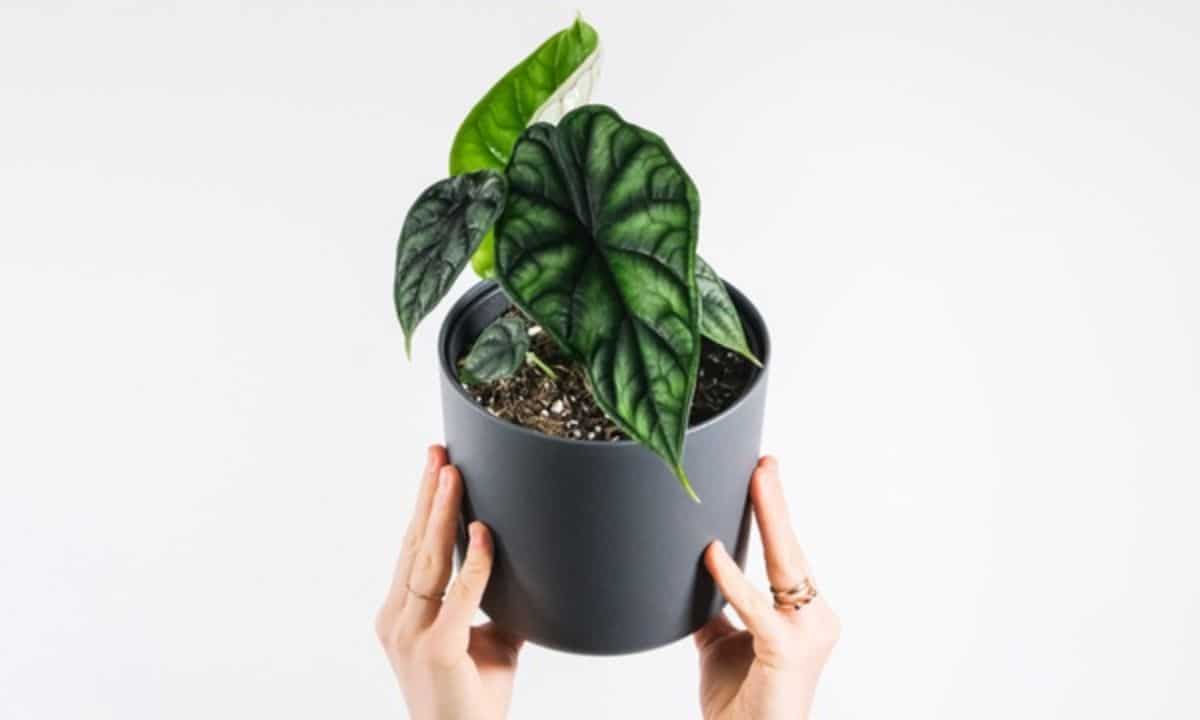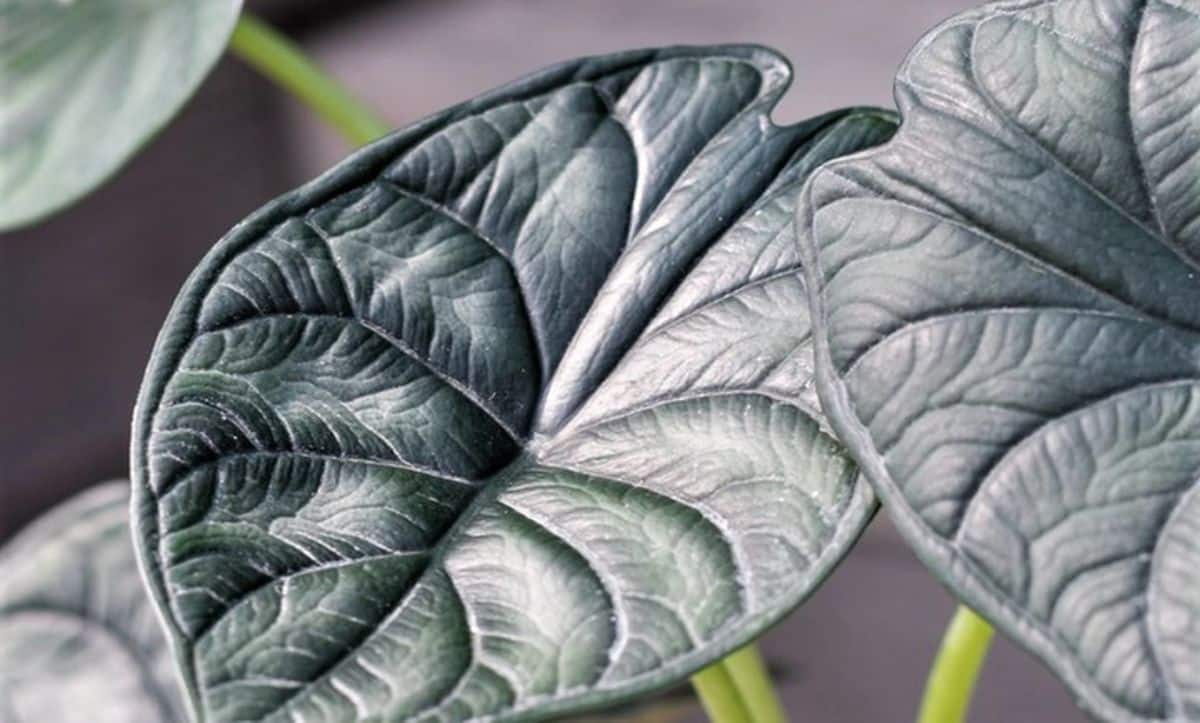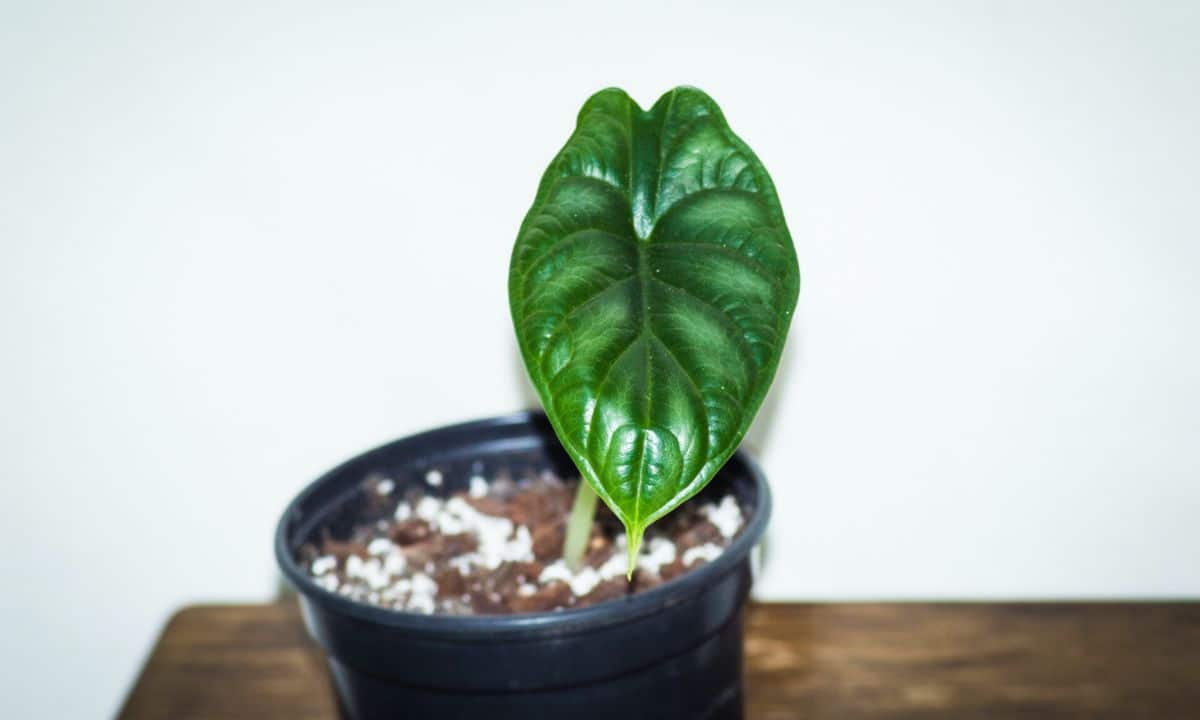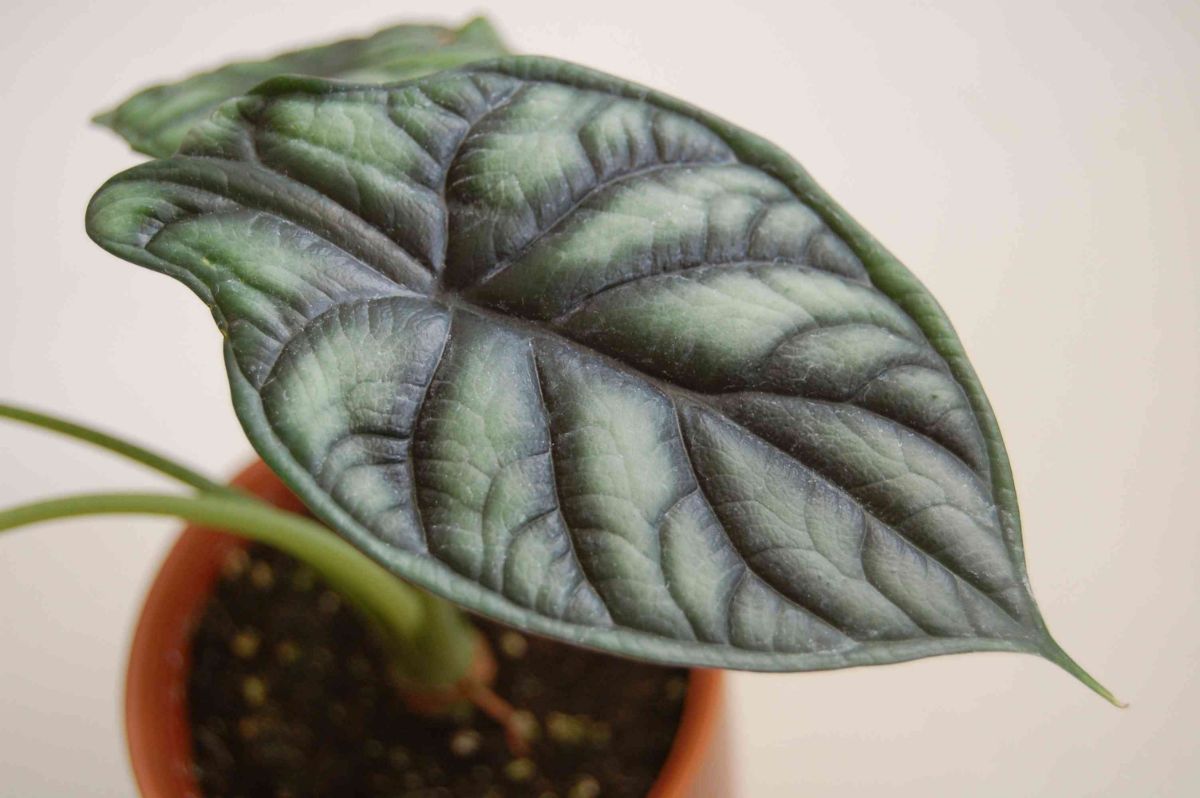
Alocasia Dragon Image Source: Groupon
There is no doubt that one of the most beautiful and fashionable plants is the dragon alocasia. Her conspicuous leaves make it almost impossible for you to stay away from her let alone avoid touching her.
But if you don't know much about this alocasia, the information we have gathered for you will help you to learn a little more about the plant. Go for it.
The origin of the dragon alocasia

Source: Groupon
The dragon alocasia is actually a variation of the baginda dragon scale alocasia. It is characterized by having leaves with a more or less thick and veined texture. Because of this, it is considered similar to what dragon scales would be. Also, the green color is the most characteristic and it darkens as the leaf matures point in this way, when it is small it has a light green color and this color intensifies as the leaf grows and develops until maturity.
These leaves are quite hard but at the same time flexible and although the underside is not too striking, the truth is that it also fulfills its function and attracts attention. And it is that this one is pale cream with some maroon veins.
The origin of the dragon alocasia is in the tropical forests of Borneo. It lives in the shelter of other plants and is quite demanding in terms of its needs. That is why it is one of the most special plants you can have at home.
Something that not many know is that dragon alocasia blooms. However, experts recommend that, as soon as it is seen that it is going to bloom, they are cut off because, first, they are not as pretty as the leaves; and second, because they steal too much energy from the plant for it to stay healthy.
If you still want to see the flowers, these are small purple spathes. As we tell you, they are not very pretty, and they certainly do not do their leaves justice.
Dragon alocasia care

Source: trobotanica
If you have also succumbed to the charms of the dragon alocasia then it is possible that you have one in your house or that you are going to buy one. Whatever the case may be, this will interest you because we are going to give you a guide to the care that you must provide to keep it healthy.
Location
The location of the dragon alocasia is normally indoors. However, many are of the opinion that Where this plant would be best would be in a terrarium to maintain constant humidity as well as temperature.
If you do not want to have it inside a terrarium as long as it provides the necessary amount of lighting as well as adequate temperature and humidity, you can have it anywhere in the house.
Regarding lighting, it is important that receive bright light but not the sun's rays because they could burn the leaves. In summer it is best to move it away from the windows as much as possible, while in winter it is better to bring it closer so that it receives as much light as possible.
Temperature
The ideal temperature of the dragon alocasia is between 13 and 27 degrees centigrade. When these temperatures are colder or warmer, the plant suffers and affects the leaves above all, burning them.
This is due to humidity since, if it is not provided with adequate humidity, the leaves begin to dry. In fact, you could lose the plant because of this problem.
Humidity
As we have told you before, humidity is one of the most important parts of the care of the dragon alocasia. In this case, the ideal would be to have a humidity between 60 and 80% since in this way the leaves will be kept without any injury.
Irrigation

Related to humidity, irrigation is also important for the dragon alocasia. Despite being a tropical plant, it does not really need as much water as we might think at first.
It is important water whenever you see that the top of the soil is dry but never do it too much. It is preferable to repeat several times a week than to do it only once and soak it too much because that will affect the roots.
Substratum
The land for alocasia is made up of universal substrate, perlite, coconut fiber and orchid bark. This will provide a fairly oxygenated soil and prevent water from accumulating inside. Another option for planting dragon alocasia is to use pon owl.
As for the transplant, it is necessary to avoid doing it as much as possible because it does not take it well at all. It prefers small pots and develops in small spaces. In addition, it does not take well to changes in season or location, so be careful not to move it a lot.
Subscriber
During the spring and summer you can add a little fertilizer but, unlike other plants, It should be applied only every six weeks since it does not need it.
Pruning
The dragon alocasia does not need pruning, but yes, that the leaves that are losing be removed. This will also prevent the appearance of pests or diseases.
Plagues and diseases
We must warn you that the dragon alocasia is one of the plants that can suffer the most pests and diseases throughout its life.
aphids, red spiders, or mealybugs are the most common on this floor. As for diseases, the main one is due to excessive watering that can rot the roots.
Multiplication
If you are good at dragon alocasia, it is possible that, over time, tubers will appear in the same pot. These are the ones that can allow you to divide the plant into several. But to achieve this, you have to provide all the care that we have told you perfectly.
For this, you have to wait for the moment when you must transplant it since it will be the way in which you can expose the part of the roots and see if it has shoots that you can separate and get them to survive.
And it is that you should provide them with a greenhouse location for a while (or with a transparent plastic bag) to maintain the right humidity and temperature for them to develop.
Now that you know a little more about the dragon alocasia, it is time for you to make the decision of whether it is the plant that you should have or if it is better to see it only in photographs. Keep in mind that it is toxic and it is not recommended to have it with pets or with children if they usually touch the plants.